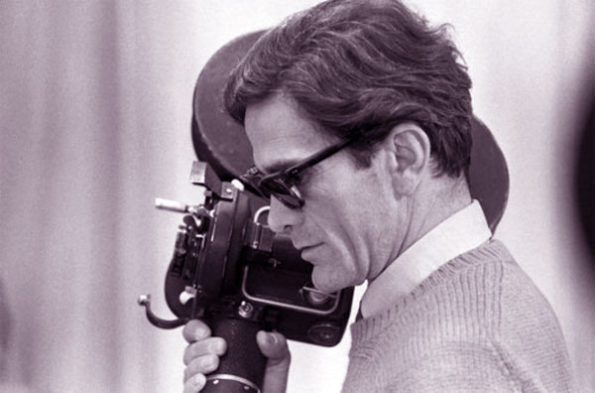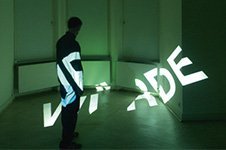Search
To search for an exact match, type the word or phrase you want in quotation marks.
A*DESK has been offering since 2002 contents about criticism and contemporary art. A*DESK has become consolidated thanks to all those who have believed in the project, all those who have followed us, debating, participating and collaborating. Many people have collaborated with A*DESK, and continue to do so. Their efforts, knowledge and belief in the project are what make it grow internationally. At A*DESK we have also generated work for over one hundred professionals in culture, from small collaborations with reviews and classes, to more prolonged and intense collaborations.
At A*DESK we believe in the need for free and universal access to culture and knowledge. We want to carry on being independent, remaining open to more ideas and opinions. If you believe in A*DESK, we need your backing to be able to continue. You can now participate in the project by supporting it. You can choose how much you want to contribute to the project.
You can decide how much you want to bring to the project.

And other questions on the occasion of dOCUMENTA (13).
An exhibition is supposed to raise questions. dOCUMENTA (13) functions, in this sense, like an incredible machine, one that would be hard to imagine prior to its public presentation. Some questions are shared with the aim of understanding the project, its background and, why not, our reality.
1. Is Documenta supposed to be mainly an exhibition? What then would its specific characteristics be?
2. Is dOCUMENTA 13 representative of what Art-practice and Art-discourse might be in 2012?
3. Why has the list of artists participating in dOCUMENTA (13) been, on the whole, a well-kept secret until it was presented to the press?
4. What are the goals of the partly contradictory statements in dOCUMENTA (13)?
5. To what extent have the conditions of the industries of culture taken their toll on the Fine Arts at Documenta?
6. Is Documenta the peak of a career for curators, artists, gallery owners and collectors?
7. How much legitimizing does an art institution like Documenta need?
8. To what extent do science and technology determine art-practices? How can this two-way influence be depicted in a clear and non-misleading way in the context of an exhibition?
9. Does new terminology in art theory really contribute to qualifying the discourse about art and its communication?
10. Does Art build (its) theories? If not, what is the correlation between them?
11. What is the correlation between artistic and curatorial practice in 2012?
12. What makes art different from other cultural practices in 2012? What might this difference mean in 2012?
13. For how long does it make sense to redefine a format like the Documenta?
14. Does it really make sense within the framework of the 100 days of Documenta:
1) To present the work of almost 200 invited artists and scientists?
2) To produce, so far, more than 100 publications (“100 Notes – 100 Thoughts” included)?
3) To offer a parallel program with approximately 1000 events?
And last but not least
4) To extend dOCUMENTA (13) to three other countries (Afghanistan, Egypt and Canada) that are spread half way across the globe?
15. Are the superlatives and intended disharmony in the choreography of dOCUMENTA (13) really creating an enlightening image of the experience of complexity in our civilization?
16. What is gained by “accumulation” in the context of an exhibition, and in particular dOCUMENTA (13)?
17. Book of the Books: does this catalogue title suggest that dOCUMENTA (13) is the ultimate exhibition that needs no further successors?
18. Has justification replaced real debate in dOCUMENTA (13)?
19. Does the compulsory (ab)use of references signify that people are not able or willing to read the reality and presence of art works?
20. What should a meaningful but non-patronizing reference system look like in an art exhibition?
21. In reference to one of the conceptually strong points of dOCUMENTA (13), the presentation of individual and radical artistic positions that have not yet received adequate attention: why is there not a single reference to Pier Paolo Pasolini, one of the most individual, radical, tenacious and independent artists, authors and filmmakers after World War II?
22. To what extent is it possible to retain an individual position in art, when it is becoming increasingly difficult to retain an individual position in society?
23. Why has Ryan Gardner’s great statement “cold wind in the most prominent exhibition rooms of the Fridericianum” been diluted in having to share the otherwise empty space with two other small, doomed references to previous Documenta?
24. Has Documenta changed over the past years what art could be in the eye of the regular visitor?
25. Is dOCUMENTA (13) able to answer the series of questions (taken from Muntadas’ work, Project, 2007) raised in the title above?

Andreas M. Kaufmann. Visual artist and thinker with the focus on image, public sphere and collective memory.
"A desk is a dangerous place from which to watch the world" (John Le Carré)